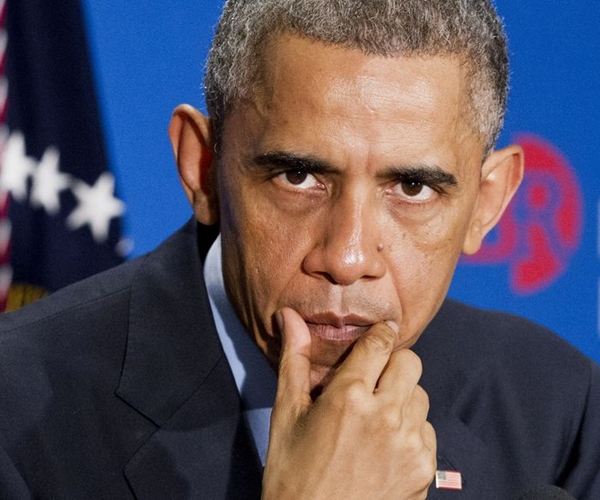At Newsmax: Obama’s Economic Report Card
Earlier this year, President Barack Obama celebrated the 7th anniversary of the passage of the American Reinvestment and Recovery Act, or as most Americans likely remember it, the $830 billion stimulus package.
The benefits of the stimulus are up for debate, but President Obama is certain of its virtues.
“Anybody who says we are not absolutely better off today than we were just seven years ago — they’re not leveling with you,” he told an audience in Florida. “By almost every economic measure, we are significantly better off.”
Now, the president has been making these claims for some time – remember just a year after the stimulus was passed he was touting the “Recovery Summer.” But with his presidency concluding, now is a fair time to verify the boasts, using a set of commonly accepted economic indicators.
Gross Domestic Product (GDP) growth. The GDP, the cumulative value of goods and services over a stretch of time, is the primary way analysts take the temperature of the economy. When Obama was inaugurated in 2009 the GDP was -2.9%. Thus far for 2016, it’s +0.95%. But compare that to the average GDP growth between 1790-2000 of +3.78. So though Obama is correct that in this sense that GDP is “better” than it was when he took office, nearly eight years of GDP growth under 3% isn’t much to brag about. C+
Unemployment. The unemployment rate is the number of unemployed Americans divided by the number of those in the work force. This figure was 7.8% in January 2009 and was 4.9% percent in August of this year. Statistically, it’s hard to argue that this isn’t an improvement, especially given that unemployment was over 10 percent in October 2009. But some caveats apply here. The decrease in unemployment is distorted by a low labor force participation rate that is hovering around 60 percent. And, it’s important to note, most of the employment growth is driven by part time and low wage service jobs, while high paying manufacturing positions are continuing to disappear. B.
Inflation. The inflation rate measures the level at which the prices of goods and services incline while the value of the dollar declines. This number was 0.0% in January 2009. As of August 2016, it was 1.1%. Again, a demonstrable improvement, especially given that inflation was -2.1% in August 2009. But the Federal Reserve targets 2% as the number most conducive to employment growth and price stability. Here Obama’s economic policies come up a bit short. C+
Wage growth. The growth of the average hourly wage of the American worker was 3.58% in January 2009. In August it was 2.43%, a number that is clearly not improvement, though it’s is certainly better than the 1.51% from earlier in the Obama presidency. D.
Workforce participation rate. The percentage of the population currently employed. This number was 66% in January 2009. It was 62.8% in August 2016 – the lowest number in 38 years. This is one statistic that shows no sign of improvement. A record 94,610,000 working age Americans have vanished from the workforce. True, some of this is due to demographics and early retirements, but many, many individuals have simply abandoned hopes of finding work. F.
Income inequality. The Gini coefficient, or ratio, measures the distribution of income throughout a nation. According to this metric, income inequality between the nation’s richest and poorest citizen has grown considerably worse and even accelerated under Obama, in spite of redistributionist policies intended to ameliorate the inequality. F.
Home ownership. The percentage of Americans owning homes was 67.8% in January 2009. It was 63.5% in August 2016. That number has not sunk to such a level since 1967. There are fewer American homeowners now than during the presidency of Jimmy Carter. And the number is likely to continue to fall. F.
Federal budget. The U.S. Government’s total spending was -10% of GDP in Jan 2009. It was -2.3% in August 2016. The aggregate number is roughly the same as under Obama’s predecessor, George W. Bush. One of the current president’s better numbers. B.
Federal debt. The amount of money owed by the U.S. Government was 65% of the nation’s GDP in Jan 2009. It was 104% in August 2016. Obama has almost doubled the federal debt from $10 trillion in Jan 2009 to $19.5 trillion in August 2016. F
Obama argues that it’s impossible to argue that the nation is not better off than when he assumed the presidency.
And, overall, some economic indicators have shown improvement, though in many cases it’s marginal and certainly not significantly by almost all measures. But, contra to the president’s claims, a host of crucial economic numbers are worse than when he took office, and those that are not could still be better.
The hard data suggest that Obama’s opinion of his economic legacy is excessively charitable compared to the results.
Originally published at Newsmax.com.
Categorised in: News
